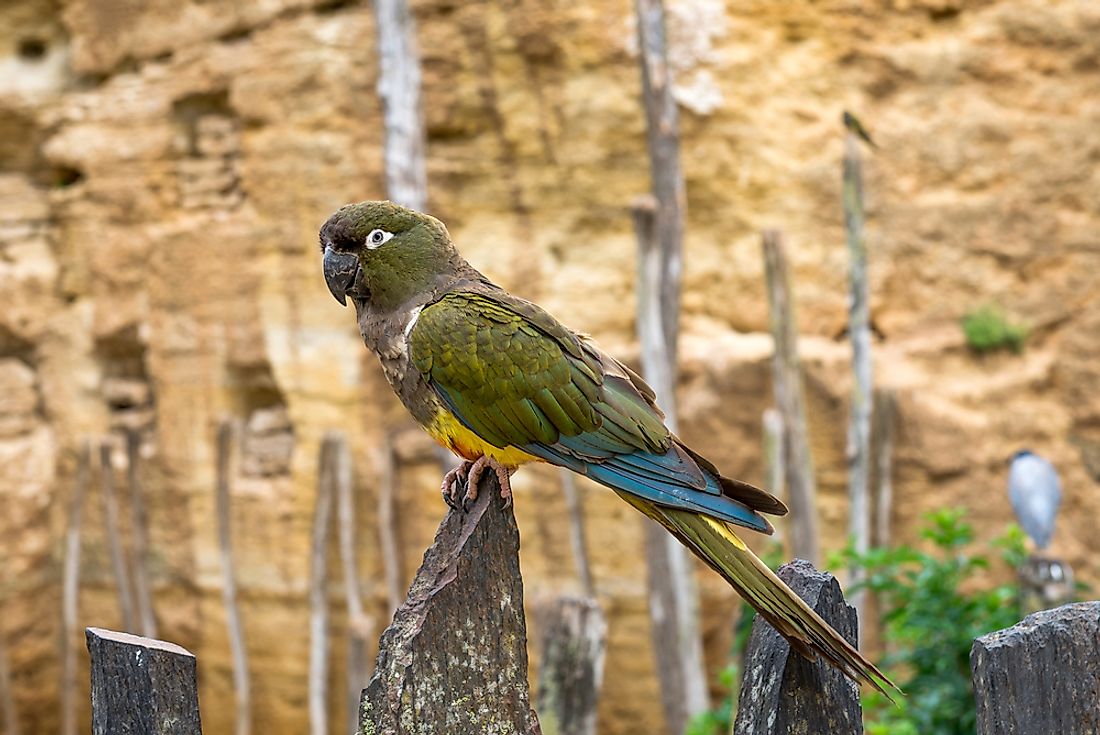What is the Kakapo Bird?

The Critically Endangered Kakapo
The kakapos are a species of large, flightless, nocturnal parrots found in New Zealand. They have an extraordinary appearance, complete with an owl-like face, a duck-like walk, and a penguin-like posture. These birds weigh about 6 kilograms when mature, and posses a mossy green- to yellow-colored plumage, with rounded tails and yellow beaks. The Kakapos are the only known parrots to have a polygynous lek breeding system, wherein males may have multiple partners, and females go into groups of males to find mates. They have visible sexual dimorphism wherein the males are larger. Kakapos males do not participate in the parental care of young ones.
The Rapidly Disappearing Kakapos
The Kakapos are endemic to New Zealand and, though they were previously widely dispersed throughout many of the country’s islands and in a wide variety of habitats, currently their presence is limited to only the forested habitats of the Codfish, Maud, and Little Barrier Islands of New Zealand. The birds had disappeared from North Island by 1930, and from Fiordland by the 1980s. Though few surviving populations remained in the South Island and Stewart Island, the presence of predators of these birds on these islands forced conservationists to shift most of the birds to the Codfish, Maud, and Little Barrier Islands. The birds are currently listed in the "critically threatened" category of the International Union for the Conservation of Nature's Red List of Threatened Species. As of 2014, only 123 birds were known to be surviving in New Zealand, as per reports from the Kakapo Recovery program.
What Is Killing the Kakapos?
The kakapos have, by nature, evolved to survive on oceanic islands with no predators and an abundance of food. Their flightlessness and giant size proves this fact to be true. However, nature’s design became the kakapo’s misfortune when man started arriving on the kakapo's lands. The Maoris, migrants from Polynesia, brought themselves and their animals to New Zealand, and these soon started claiming the lives of large numbers of kakapos. What is worse, the kakapo's pleasant and powerful odor, said to be a musty natural smell, easily gives away their locations. Scientists believe that since the birds themselves have a strong sense of smell, their strong body odor perhaps allows them to socially bond using the smell as a chemosignal. Hunting of the bird, further aided by the kakapo’s flightlessness and habit of freezing when threatened, thus became extremely easy. Not only did the Maoris hunt the birds extensively for their meat, skin, and feathers, but the introduced animals brought by the Maoris to the islands, such as their dogs and Polynesian rats, also further decimated the kakapo populations. Rats, for instance, primarily predated upon kakapo eggs and chicks, while dogs hunted mature birds themselves. The arrival of Europeans into New Zealand further sealed the ill fate of the birds, as these newcomers started clearing vast tracts of natural kakapo habitats, and also introduced even more predators in the form of domestic cats, stoats, and black rats from Europe. Furthermore, as the knowledge of this strange bird spread worldwide, many collectors captured or killed these birds, and took them to display them in museums, zoos, and personal collections. Most of these captured birds were unable to survive these new altered habitats, and perished as a consequence.
What is Being Done to Save These Creatures?
The fact that the sweet smelling kakapo was fast disappearing was realized quite late. In the late 19th Century, the New Zealand government assigned the task of protecting the kakapos to a dedicated naturalist, Richard Henry, who shifted over 200 of these birds to the predator-free Resolution Island. However, stoats soon learned to swim to the island, and cleared out its kakapo population within a matter of only 6 years. In the 1980s and 1990s, several batches of kakapo transfers attempted to move the kakapos to completely predator-free islands once more. Currently, a great deal of effort is being put into keeping these birds and their nests safe on these protected islands, as well as to manage kakapo mating patterns and even use artificial insemination to ensure higher fertility rates among these birds to build the population back up to a more secure level.







